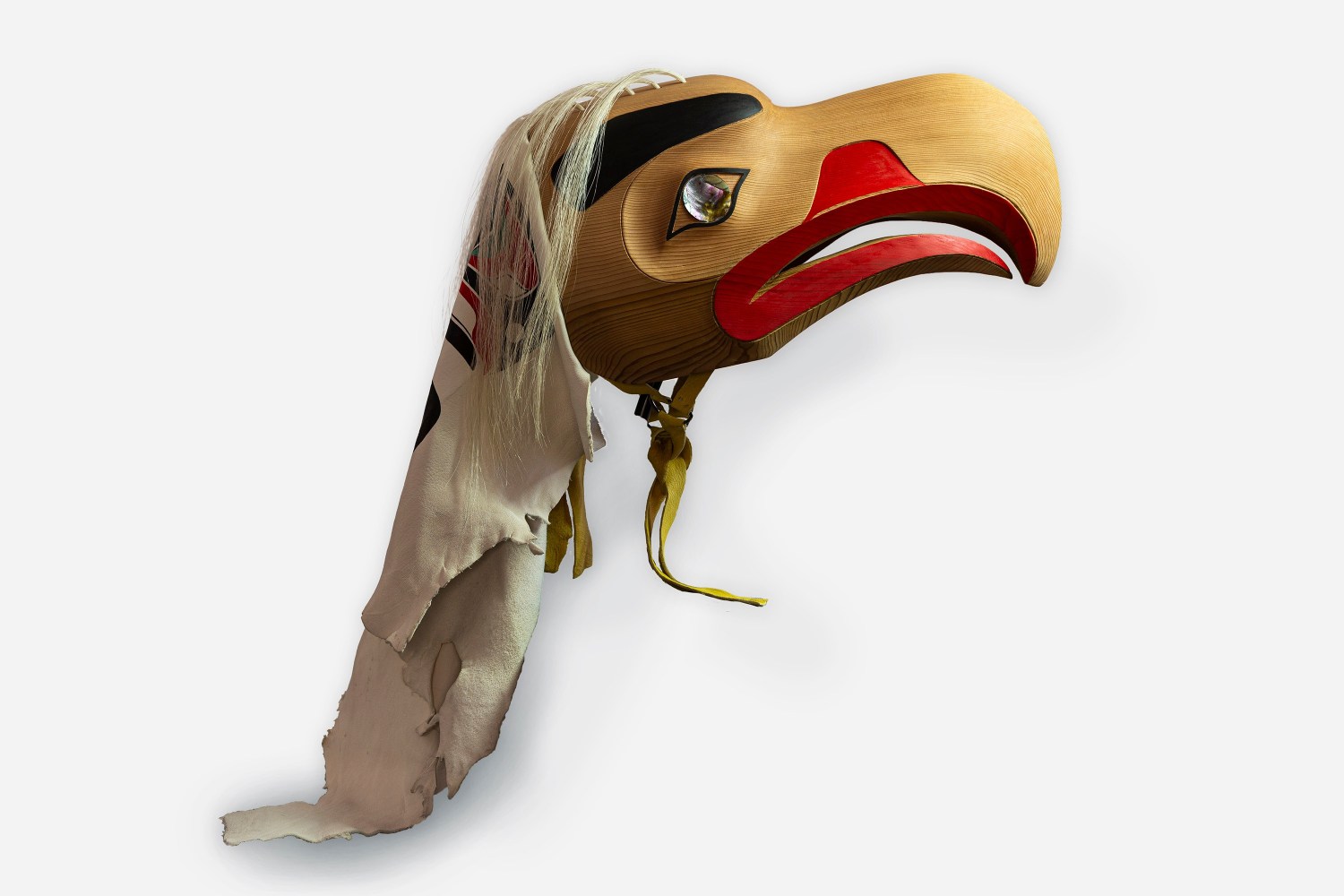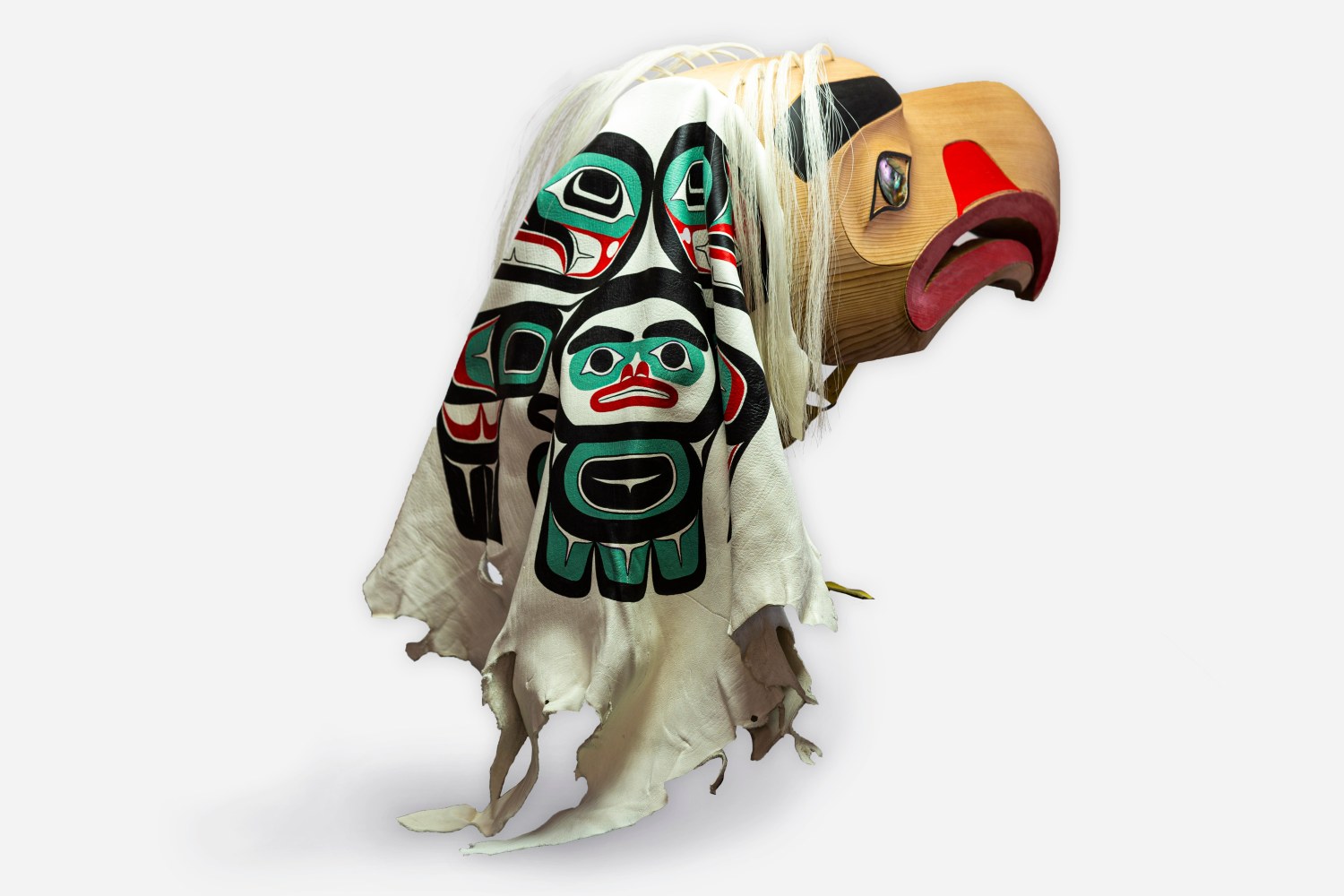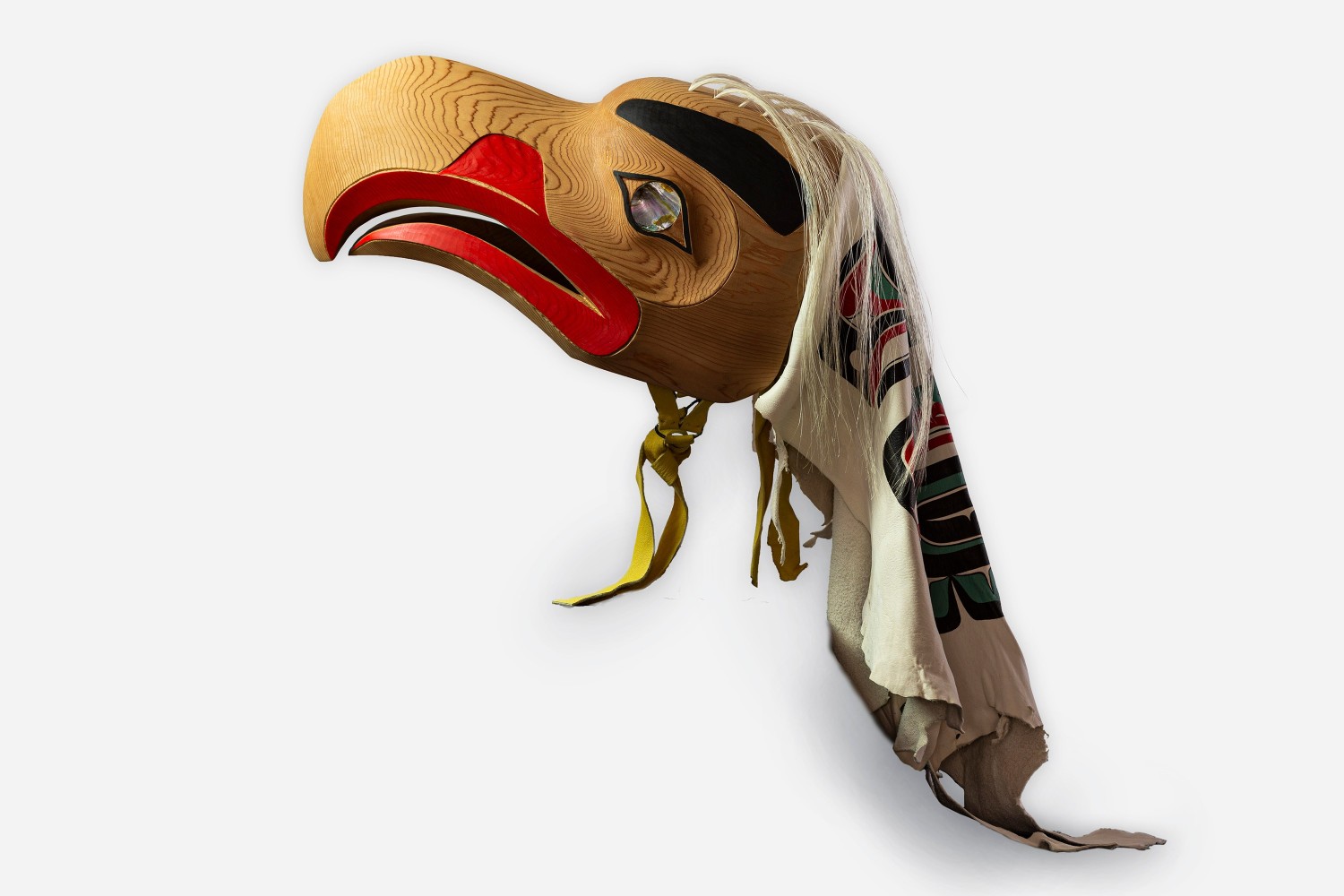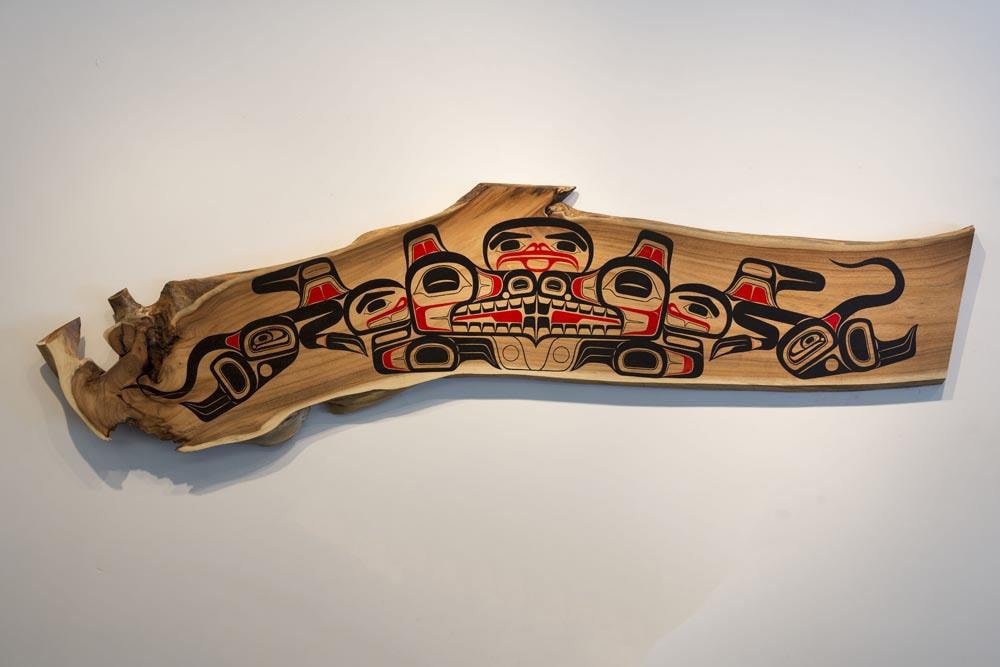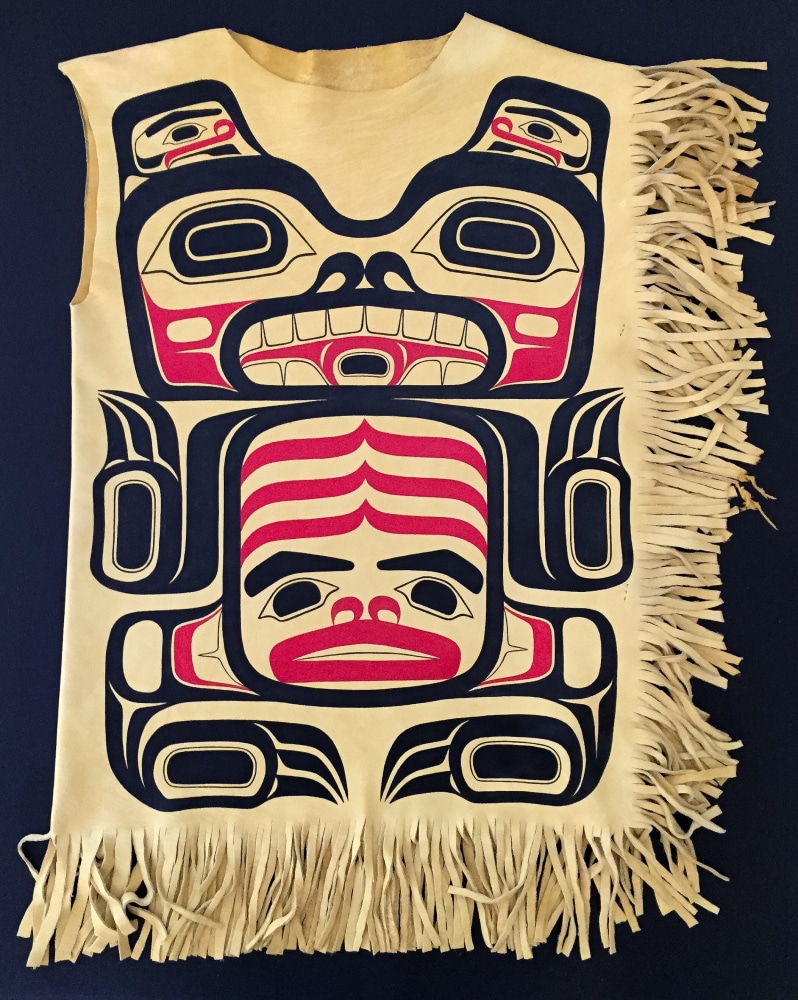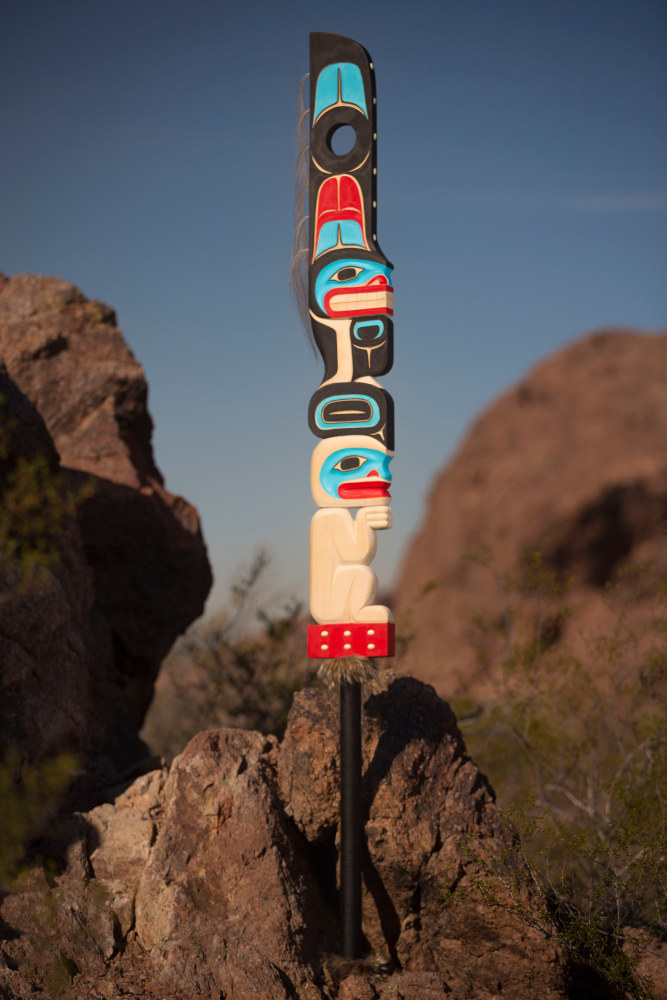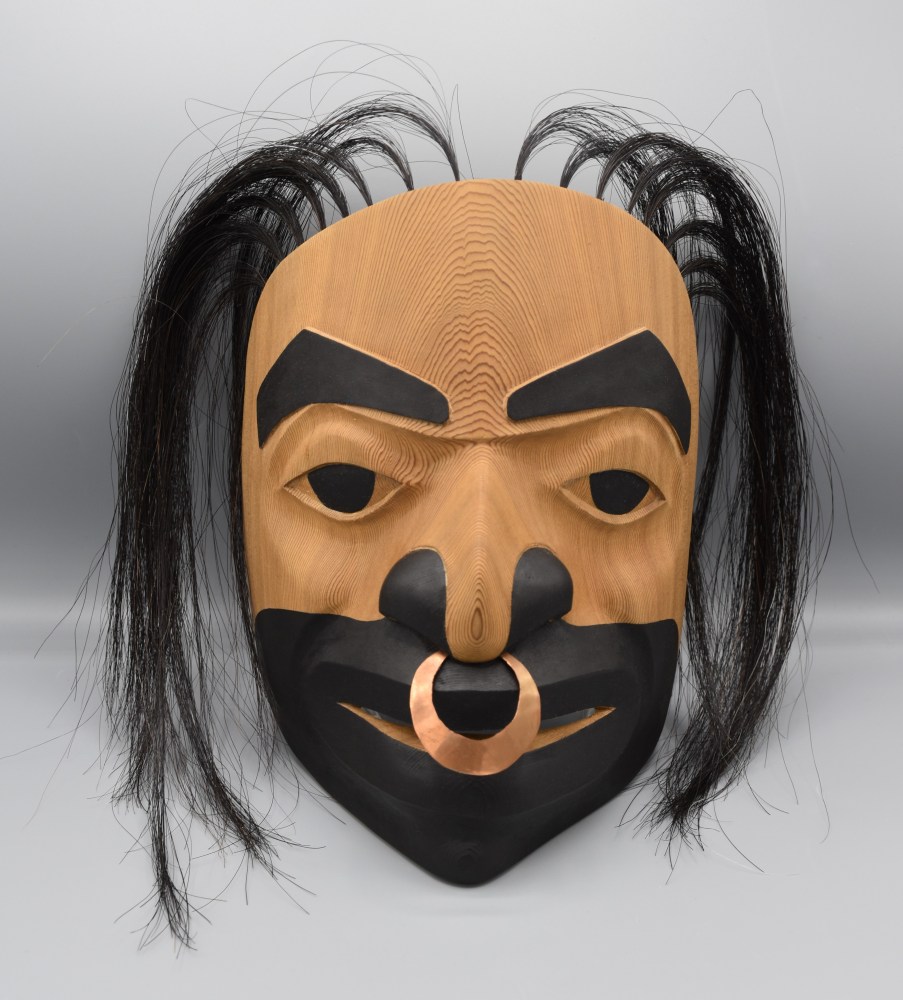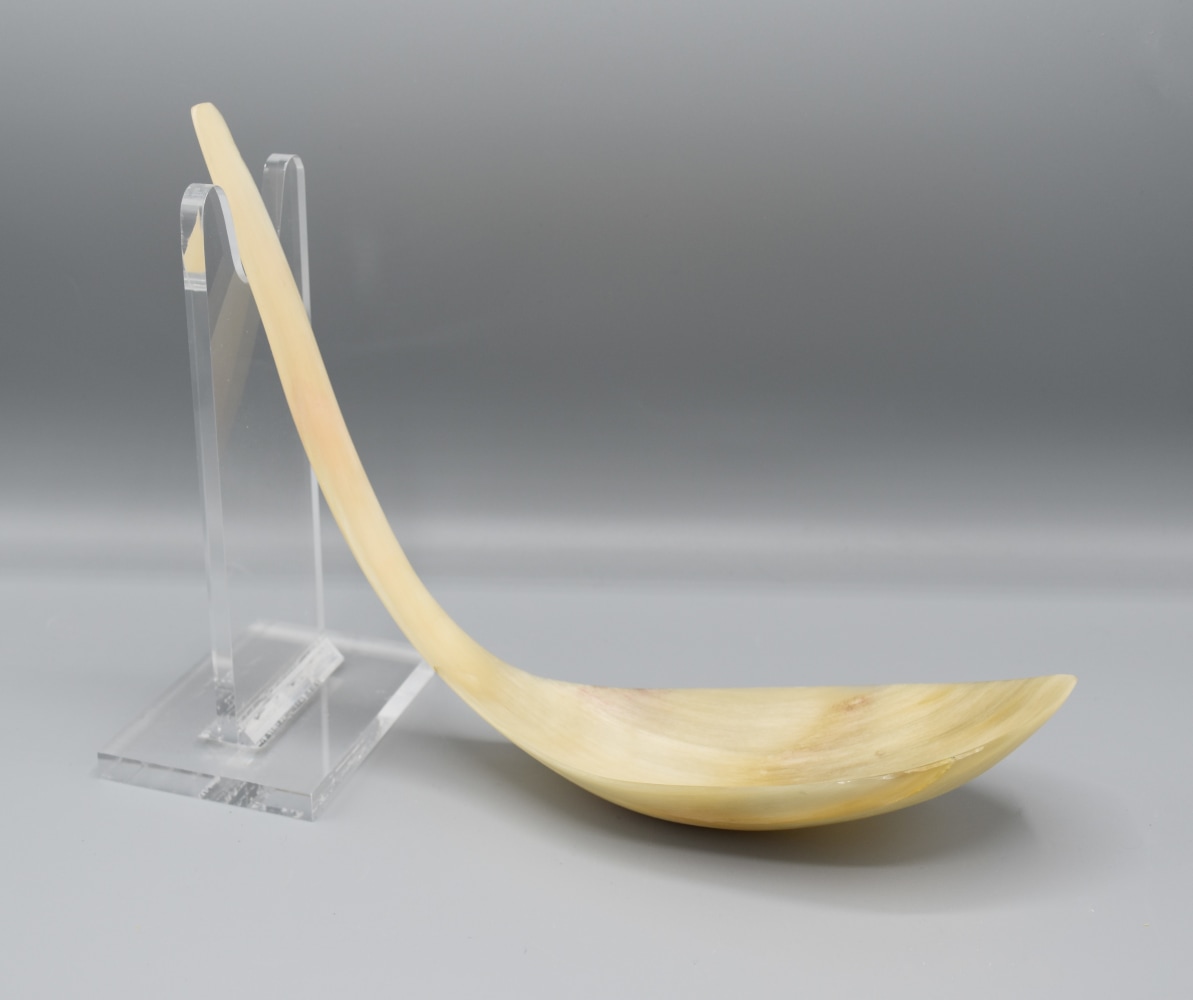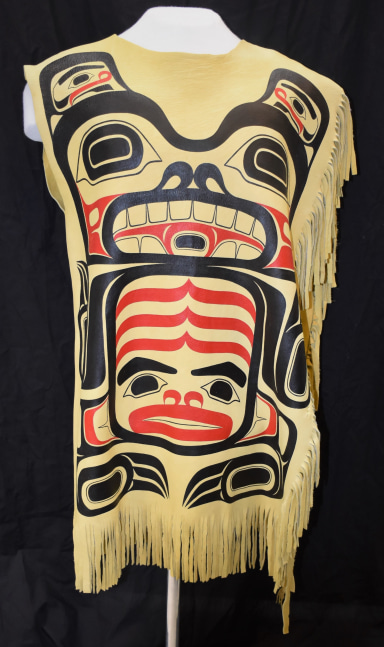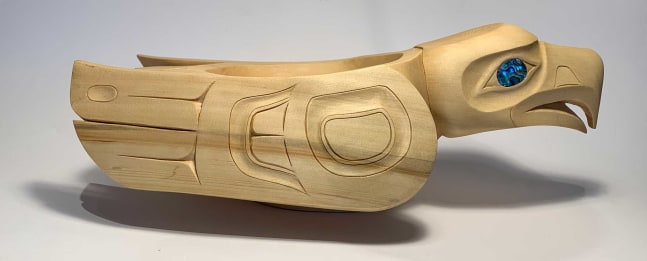Visual Language
James Johnson
January 28 - May 4, 2022
Head-Image

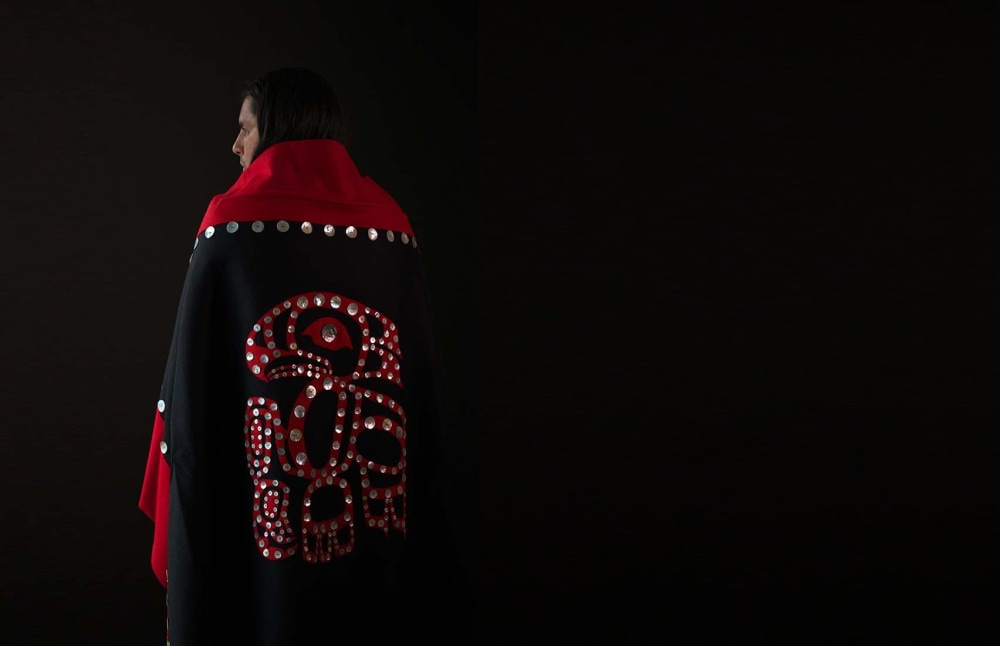
James Johnson
Image courtesy of the artist
James Johnson, an enrolled member of the Tlingit and Haida Tribes of Alaska, is an exceptional artist who works in a variety of media, including wood carving, leatherwork, and painting. He is a member of the Tlingit Ch’áak’ Dakl’aweidi Clan (Eagle Killerwhale). With a focus on traditional Tlingit wood carving, his work continues the long artistic traditions of his people. Born and raised in Juneau, Alaska, Mr. Johnson currently resides with his family in Phoenix, Arizona.
Encouraged to begin carving by his father, Franklin Johnson, Mr. Johnson is a self-taught artist who has been practicing his craft for fourteen years. He has dedicated his life to reviving the traditional arts of his ancestors. Although there is no word for “artist” in the Tlingit language, those that create carvings were known as at kach aak’u (carvers). Carving is an integral part of the preservation of Tlingit history and culture. In the words of Mr. Johnson, “it [carving] is a visual language that represents who the Tlingit people are, and how we live in balance with all things.”
His carvings are made from red and yellow cedar, materials used by Tlingit people for millennia. Utilizing tools such as adzes and crooked knives, he carves his pieces entirely by hand. In addition to creating three dimensional carvings of masks, helmets, and bowls, Mr. Johnson also paints works on canvas inspired by Tlingit designs and motifs. A unique area that he has expanded into is the painting of live edge slabs of mesquite wood with Tlingit designs.
Mr. Johnson has won numerous awards for his work including: 1st Place Wood Sculpture, 2019 SWAIA Santa Fe Juried Art Show, Santa Fe, New Mexico; 1st Place Wood Sculpture, 2020 Sealaska Heritage Celebration Juried Art Show, Juneau, Alaska; and Honorable Mention, Sculpture, 2021 Heard Museum Guild Juried Art Show, Phoenix, Arizona. His work is included in the collections of multiple museums including: the Art Institute of Chicago, the Denver Museum of Nature and Science, the Sioux Indian Museum, and the Interior Museum.
To purchase artwork after the exhibit closes, please contact James Johnson through his website at www.jamesjohnsonnativeart.com.

Gunakadéit (Sea Wolf Headdress)
Yellow Cedar, Abalone, Shell, Deer Hide, Acrylic 14" x 17"
© 2020 James Johnson
Gunakadeit was a young man, who his mother-in-law deemed lazy, an insult in Tlingit society. His village fell upon famine. He found the skin of the sea wolf on the beach, and wore it's skin to give him super natural powers. In secrecy at night, he wore the skin, and brought food back to his village and placed it upon his mother-in-law's clan house each morning. He would then sleep all day from being tired, and be called lazy. His mother-in-law thought she was a prophet, and believed she was saving the village. Until one day she said a whale would appear the next day. Gunakadeit brought back a whale, but it ended up taking his life. When the village saw the whale at the beach, and they saw Gunakadeit lying dead wearing the Sea wolf skin, they realized it wasn't the mother-in-law. It was him who saved his village.
-- James Johnson
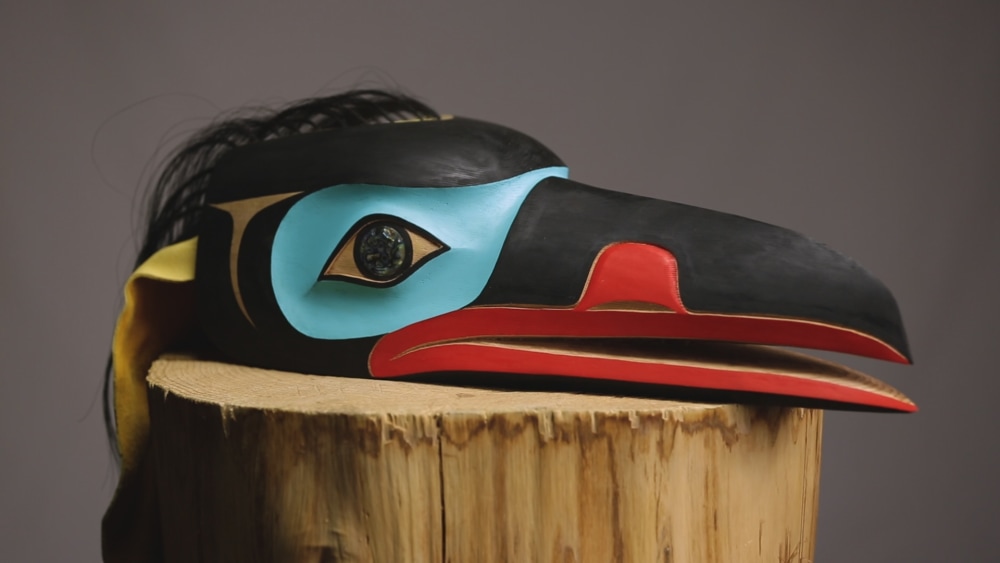
Yéil S'aaxwu (Raven Headdress)
Red Cedar, Horse Hair, Deer Hide, Abalone, Acrylic
© 2020 James Johnson
Raven is one of our top clan crests in our culture. He was a trickster, but also a teacher. Headdresses were worn and danced in during our Ku.eex' (potlach ceremony).
-- James Johnson
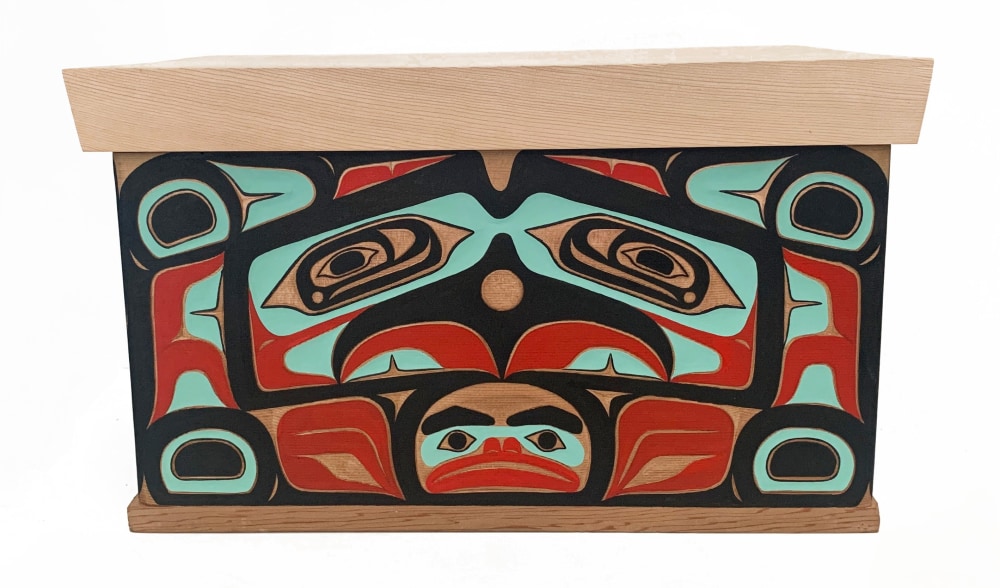
Lákt (Eagle and Bear Bentwood Chest)
Red Cedar, Acrylic
© 2021 James Johnson
Bentwood Boxes are constructed from a single board of cedar, you cut 3 kerf cuts, and steam the wood to bend the corners. Bentwood boxes were highly prized objects within our culture. The boxes that were painted and carved were typically owned by high ranking chiefs, and were a symbol of wealth. We used the boxes for cooking, food storage, and for storing our sacred ceremonial items called our At.oow.
-- James Johnson
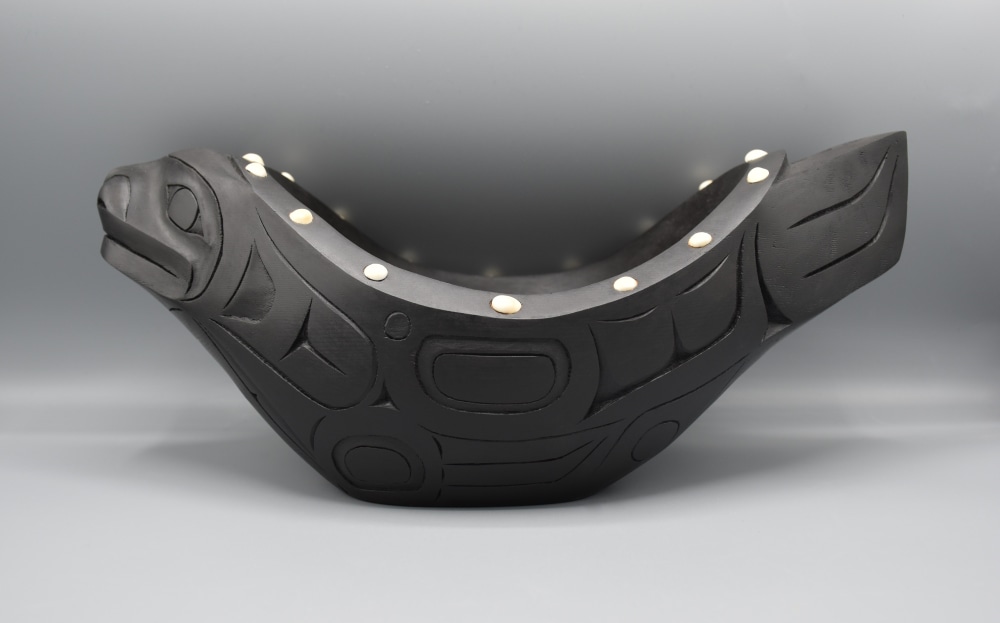
Tsaa X'ayeit (Seal Bowl)
Red Cedar, Operculum, Acrylic 13" x 7"
© 2021 James Johnson
Our Ku.eex' (potlatch) means "to give" in Tlingit. The Ku.eex' was our central notary public event, their attendance meant they were in agreement of that event. The naming of a new chief, the death of a chief, the raising of a totem pole, etc. a Ku.eex' solidified that event in our society. It would take years of planning, you would have to gather enough food to feed everyone. The food was served in beautifully carved dishes like this.
-- James Johnson
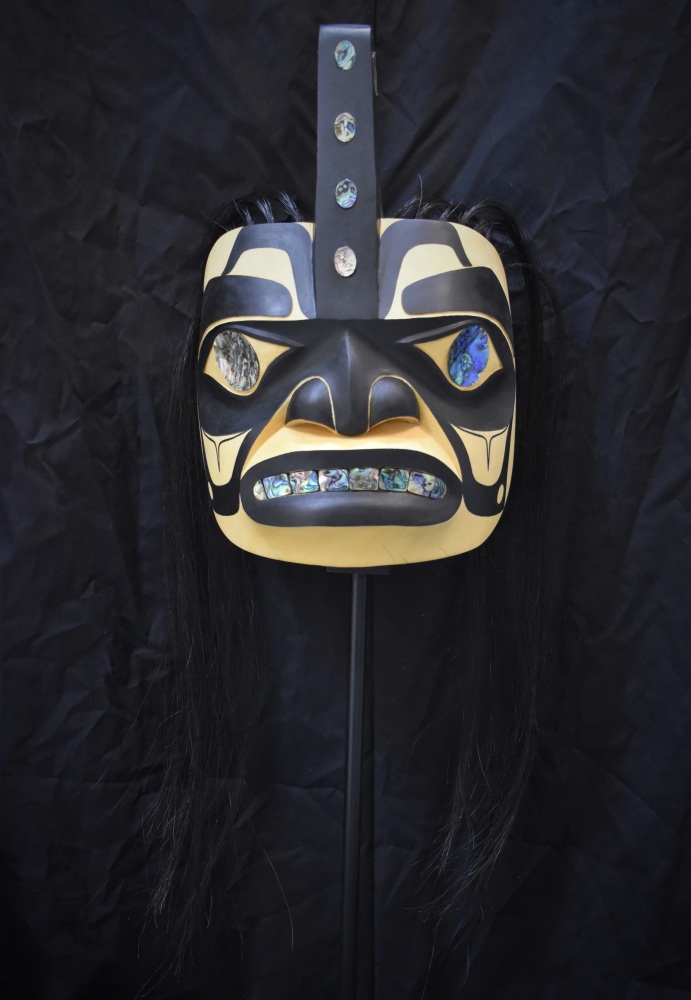
Killerwhale Mask
Yellow Cedar, Abalone, Horse Hair, Acrylic 9" x 13"
© 2021 James Johnson
My clan is Dakl'aweidi (killerwhale), masks were meant to be worn and danced in during our Ku.eex'. Our At.oow' (sacred clan items) were owned by the clan, and passed down for generations.
-- James Johnson
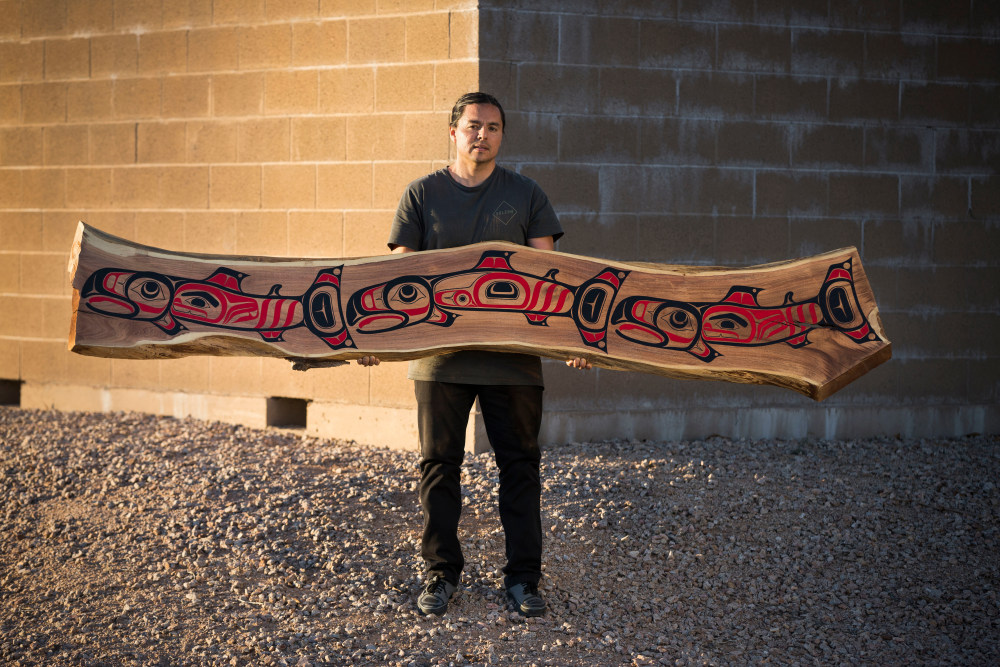
Xáat Héen (Salmon Stream)
Live Edge Mesquite, Acrylic 9 ft x 24 in
© 2018 James Johnson
Fog Woman - Raven was traveling and became lost in the fog. A beautiful woman appeared, and took off Raven's spruce root hat, and all the fog went in, so he could find his way. Raven married her, and as gift she gave him salmon, something he had never had before. When Fog Woman would comb her long black hair, salmon would come out. Raven became obsessed with his salmon, and began to mistreat Fog Woman. So she left. As she was leaving, she took back all the salmon she gave Raven, he tried to grab her and she turned to fog. Fog woman also had 2 beautiful daughters that lived in the streams. Salmon would return to the streams to see their beauty one last time before they died.
-- James Johnson
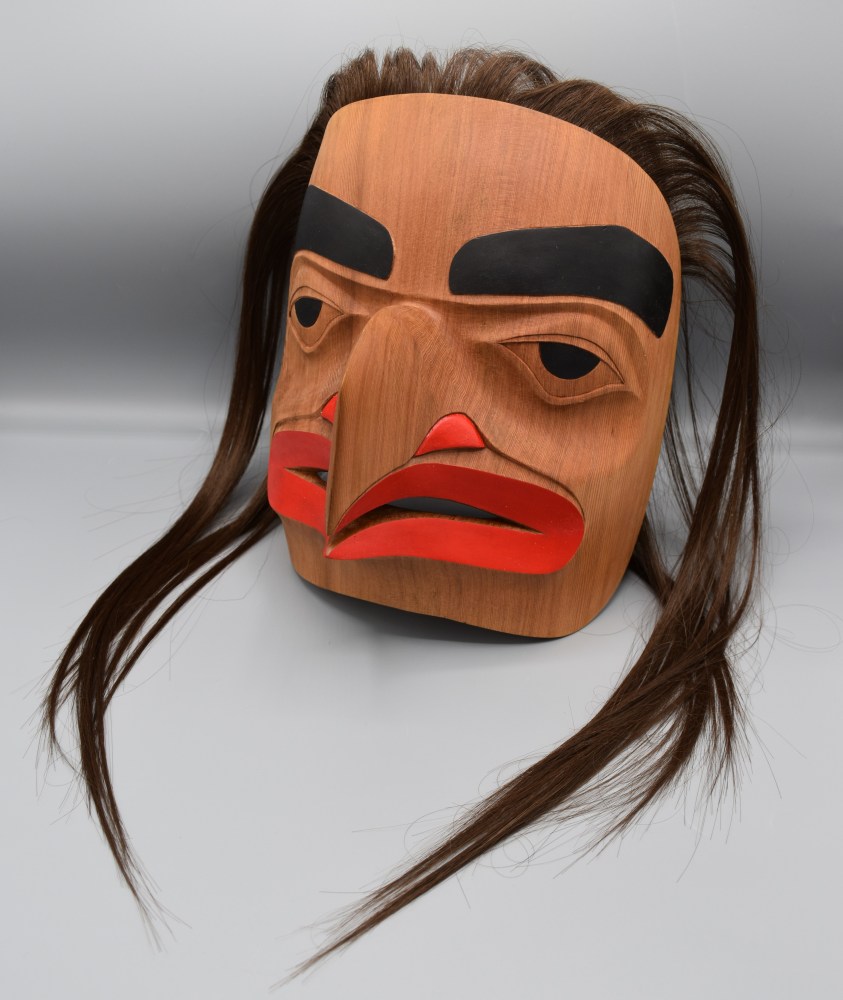
Human Form Eagle Mask
Red Cedar, Human Hair, Acrylic 9" x 10"
© 2021 James Johnson
Transformation between human and animal was common in our stories. This depicts a human form eagle, masks were meant to be worn and danced in during our Ku.eex'. Our At.oow' (sacred clan items) were owned by the clan, and passed down for generations.
-- James Johnson

Sea Lion War Helmet
Red Cedar, Wolf Teeth, Seal Whiskers 8.5" x 14.5"
© 2021 James Johnson
From age 7, all Tlingit boys left their mother and father, and were raised by their uncles to become warriors. Their training was very strict, if the boy messed up, they would often punish the uncle for his mistake, saying he was not raising him right. The environment in Alaska was harsh, you had to be strong physically and mentally to survive. Every morning, a yell would ring out in the Kwaan (village), all the young men and boys had to go down to the ocean and sit in the cold water. It was a competition as to who can sit in the longest, when they would get out, they would be whipped with branches to deaden the nerves. My grandfather's were all Dakl'aweidi Clan chiefs, who practiced this into their elder years to lead by example. Inter clan warfare was common. The young men all competed as to who would receive the honor of wearing Tlingit armor like this sea lion helmet.
-- James Johnson
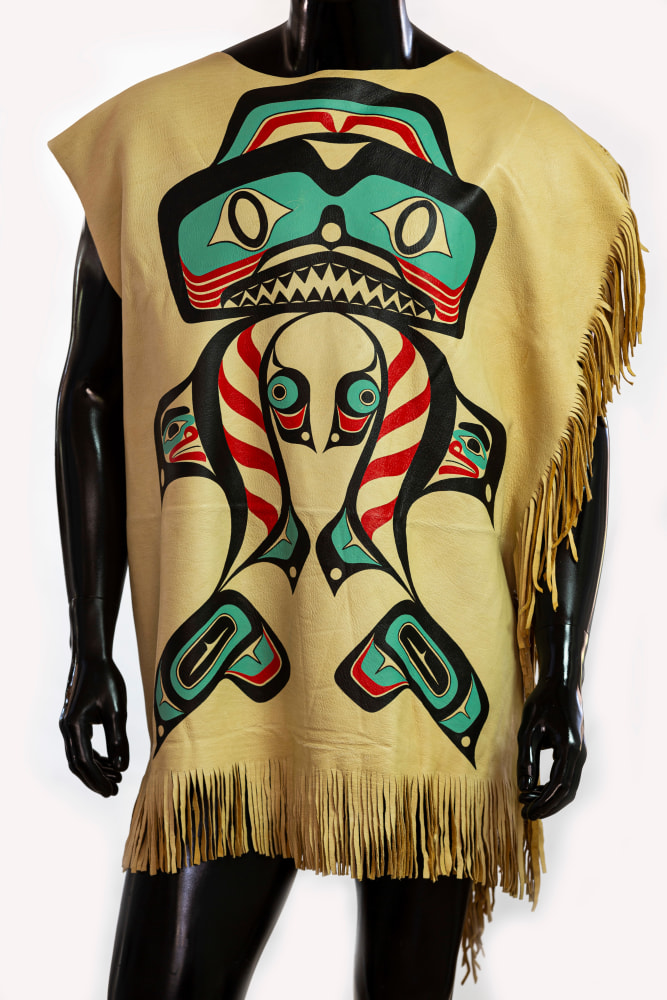
T'oos Sankeit (Shark Armor)
Elk Hide, Sinew, Acrylic 26" x 36"
© 2020 James Johnson
The Tlingit would trade for Elk hide in the southern regions (Oregon, Washington). They would use the elk hide to create their lightweight armor, it provided more protection than deer hide. They would wear this under their wooden slat armor. Traditional Tlingit culture, every man was trained to become a warrior. You had to be the most proven Warrior among your clan to earn the right to wear the armor.
-- James Johnson
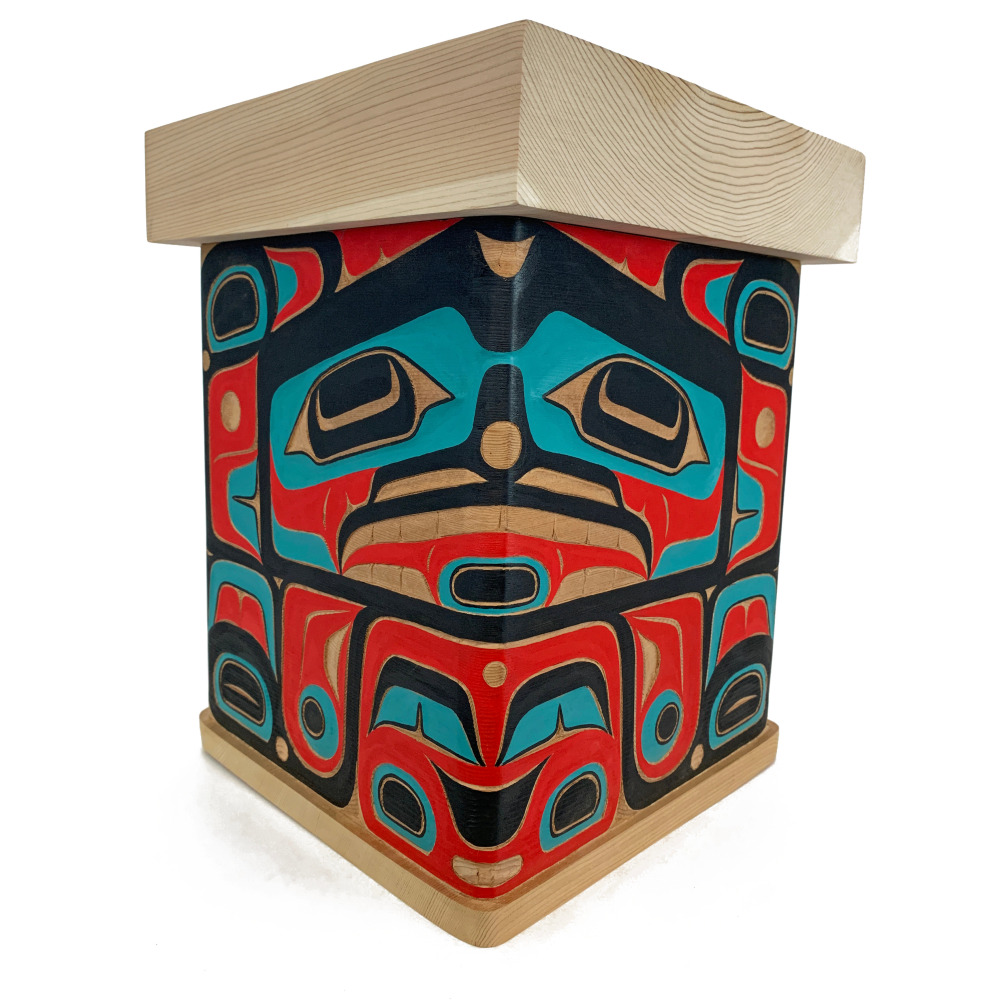
Lákt (Bentwood Box)
Red Cedar, Acrylic 9" x 9" x 13"
© 2020 James Johnson
Bentwood boxes are constructed from a single board of cedar, you cut 3 kerf cuts, and steam the wood to bend the corners. Bentwood boxes were highly prized objects within our culture. The boxes that were painted and carved were typically owned by high ranking chiefs, and were a symbol of wealth. We used the boxes for cooking, food storage, and for storing our sacred ceremonial items called our At.oow.
-- James Johnson
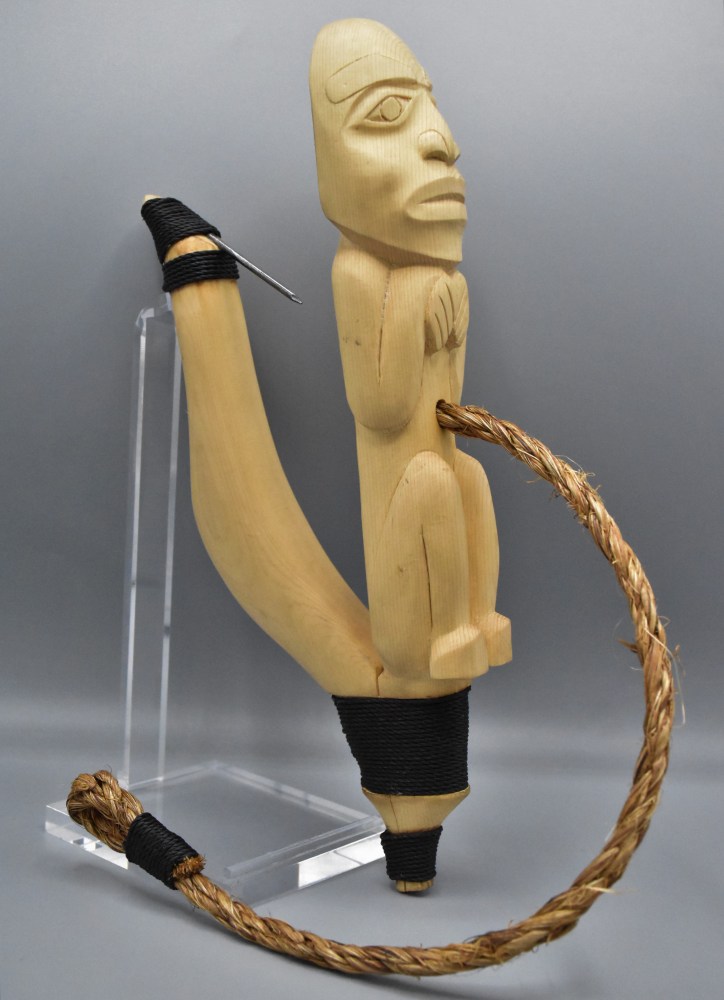
Náxw (Halibut Hook)
Yellow Cedar, Steel, Twine 4.25" x 10.5"
© 2019 James Johnson
Our people were sea going people. Our principal food source came from the ocean. This carved halibut hook with a human shows respect to the Halibut.
-- James Johnson
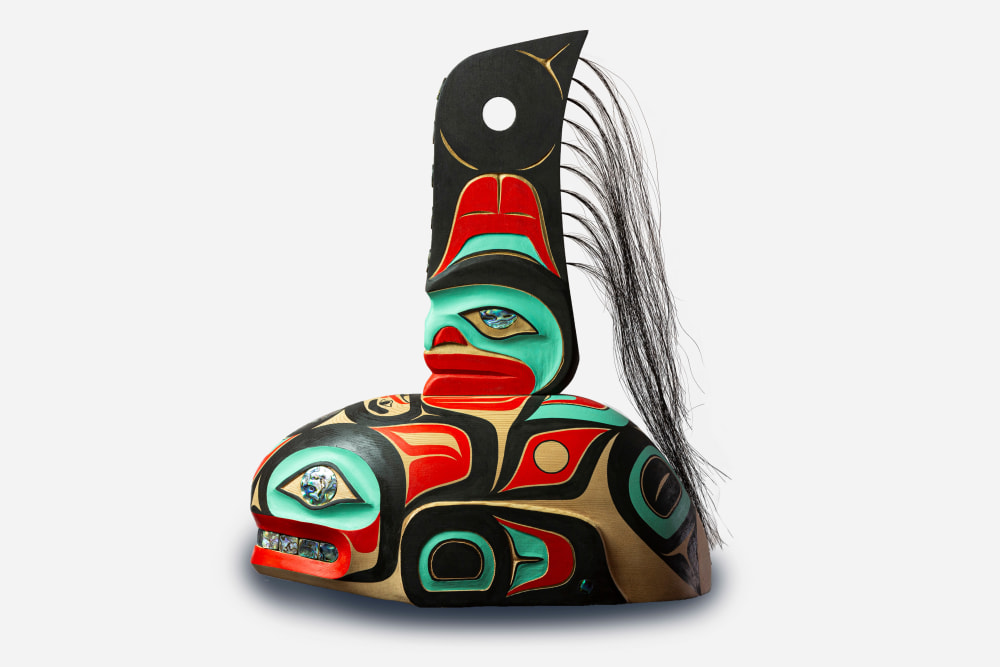
Kéet S'aaxw (Killerwhale Clan Hat)
Red Cedar, Abalone, Horse Hair, Deer Hide 14" x 17.5"
© 2020 James Johnson
During colonization of Alaska, our Ku.eex' was banned. It was illegal to host our traditional ceremonies, and large amounts of our At.oow' (sacred ceremonial objects) were confiscated and taken. The Smithsonian held a Killerwhale Clan hat from my grandfather's Kwaan for close to 100 years. It was repatriated in 2006. This Killerwhale Clan hat I carved honors that piece.
-- James Johnson

Hawk Mask
Yellow Cedar, Copper, Horse Hair, Acrylic 8" x 9"
© 2019 James Johnson
Raven and Hawk were friends. The world was still in darkness, and Raven saw a fire burning far off on an island. He asked his friend the Hawk to fly out and bring it back. The hawk had a long beautiful beak, just like raven. He asked Raven how is he going to bring it back to him? Raven broke a branch off a tree, and said dip this in the fire and bring it back. So, Hawk flew out and dipped the branch in the fire and was bringing it back to Raven. The fire burned the stick down, and the heat melted Hawk's beak, and made it bend. He finally got it back to Raven, and Hawk asked, what are you going to do with the fire? Raven said he's going to put this fire in all things, it represents Spirit. Our Tlingit beliefs is that everything has spirit, and is alive. Humans, animals, the earth all share this spirit, none are better than the other, and we give respect to all things.
-- James Johnson
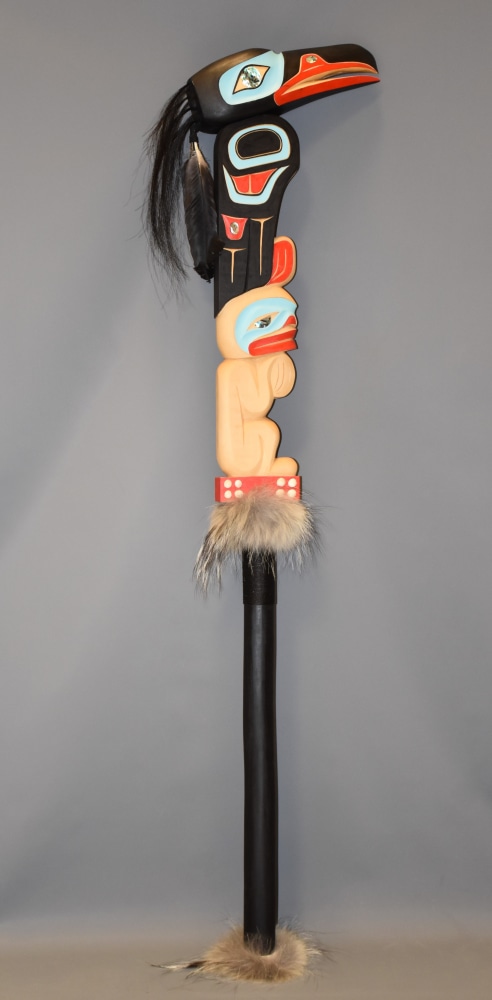
Yéil Woochaagáa (Raven Dance Staff)
Yellow Cedar, Abalone, Operculum, Horse Hair, Raven Feathers, Wolf Fur
© 2021 James Johnson
Our Ku.eex' (potlatch ceremony), a dance staff would be used. This depicts one of our main clan crests, Raven.
-- James Johnson

Transforming Raven Bentwood Box
Yellow Cedar, Red Cedar
© 2021 James Johnson
Raven released the Sun. An old Man on the Nass River kept the sun, moon, and stars for himself stored in bentwood boxes. Raven had the ability to transform into anything he wanted, he transformed into a pine needle and floated down the Nass. The Old man's daughter scooped up the pine needle, and drank it. She became pregnant, and gave birth to a son, which was Raven. Raven would cry and cry for the bentwood boxes, the old Man wanted to appease his grandson, so he gave him the box containing the moon. Raven knocked it over, the lid came off, and the moon came out and flew up into the sky. Raven cried for the box containing the stars, the Old Man gave it to him, and he knocked it over, the stars came out and flew up into the sky. Last, he cried for the box containing the Sun. The Old Man gave it to him, and he knocked it over, and the sun came out. Raven transformed back into his bird form, and took the sun into his beak, and flew up through the smoke hole. Raven released the Sun into the sky, and from that point on we longer lived in darkness.
-- James Johnson
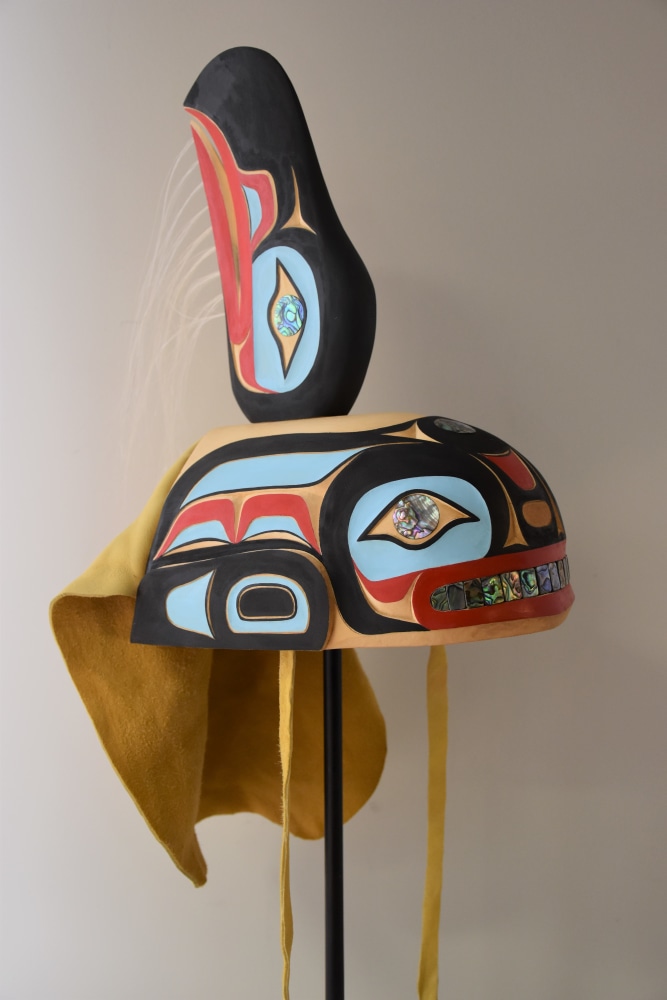
Kéet S’aaxwu (Killerwhale Headdress)
Yellow Cedar, Abalone, Horse Hair, Deer Hide, Acrylic
© 2021 James Johnson
I belong to the Ch'aak' Dakl'aweidi Clan (Eagle Killerwhale). A headdress like this would be worn and danced in during our Ku.eex' (potlatch ceremony).
-- James Johnson
